
Petr Kopecký has just released AbracaDABra 3.0.0 with some exciting new features.
AbracaDABra 3.0.0 can be downloaded from Petr’s Github release page.
Petr welcomes your feedback and bug reports on his Github issues page.
![]() WARNING: AbracaDABra 3.0.0 is not backward compatible.
WARNING: AbracaDABra 3.0.0 is not backward compatible.
You will lose the service list and audio recording schedule if you switch back to official 2.9.2!
It is therefore recommended to backup your current application settings.
Check out C:\Users\***\AppData\Roaming\AbracaDABra.
What’s new in 3.0.0? Make sure Expert mode UI is on!
Input devices
SDRplay support was added. It was tested running nicely on a RSP1A and a RSPdx.
Mind you: SDRplay API 3.15 needs to be installed on your computer. 1
Of course AbracaDABra 3.0.0 also supports AirspyR2, RTLSDR V3 and V4, Soapy SDR and RTL TCP.
I found the the Gain control working well both in Manual and in Software mode.

RTL-SDR, Airspy and SDRplay devices can now be selected before connection.
This allows you to connect to a particular device if you have more devices of the same type connected to your computer.2
SoapySDR is fixed and SW AGC removed as there is no universal way to implement it.
DAB signal overview
The DAB signal overview has a new dialogue. Open it using the three dots or by clicking on the db indicator.
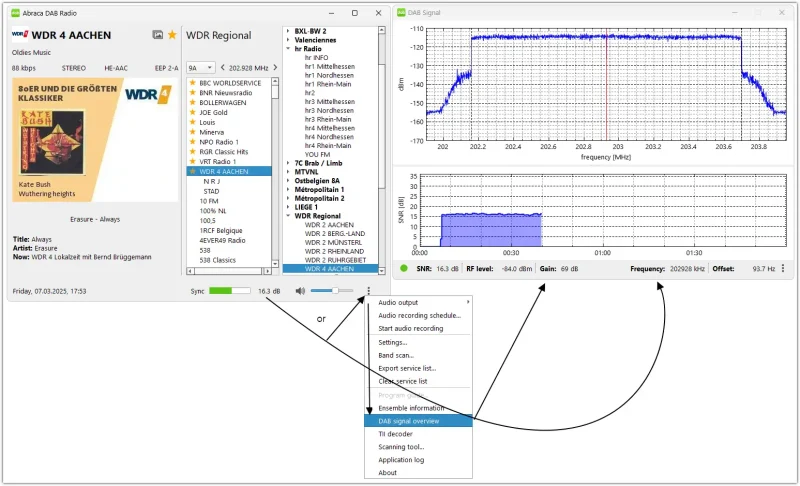
Spectrum calculation and visualisation causes higher CPU load.
Borders between plots can be moved and you can hide one of the plots by moving it to very top or very bottom.
The spectrum plot is interactive: you can move the plot by dragging with the mouse, zoom in or out with the mouse wheel.
You can also zoom an axis by clicking on it: it turns blue to indicate selection.
Clicking in the plot area un-selects the axis.
Right click to restore the default view.
Spectrum calculation and visualisation causes higher CPU load.
FMLIST ensemble .csv upload
An exciting new feature: AbracaDABra can upload a small .csv file with ensemble structure to the FMLIST anytime you tune an ensemble.
This action is indicated in the log with messages like this:
10:03:42.269 [I] Application: Uploading ensemble information (1164 bytes)
10:03:42.365 [I] Application: Ensemble information uploaded, thank you!
This is of course a great help in keeping the FMLIST up-to-date.
The .csv file is also uploaded when the scanner is running, but not so during normal band scan to keep the scan as fast as possible.
Scanning tool
Another great new feature: offline mode in the scanning tool.
Access this tool via the 3 dots.
The AbracaDABra user can not only save the results of a scan but also load previously saved .csv files, thus not only checking scan results at a later date, but also showing them on the map.
Note: the location is not stored in a CSV file, so your current location will be used to calculate distances etc. and the current TII database is used to display transmitter information.
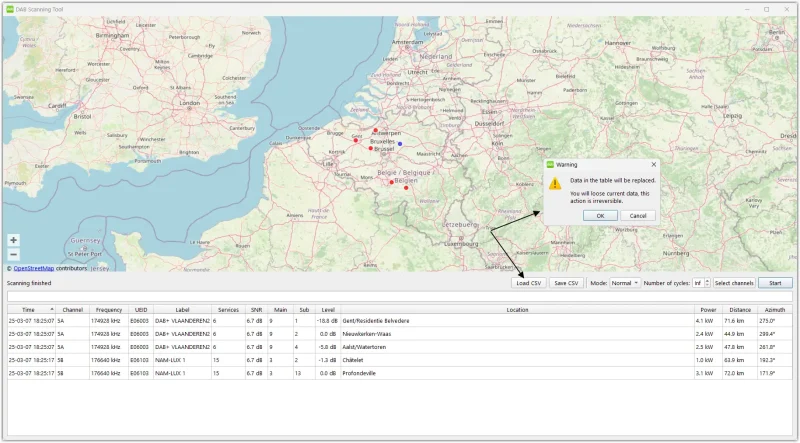
TII detection
The spectrum visualisation is modified to show carrier pairs.
When several transmitters in the ensemble network use the same TII code, the detector chooses the one that is more likely to be received.
The TII detector can be configured as more sensitive or more reliable, default is sensitive.
Zoom in using the mouse wheel and right click to go back to the default zoom.
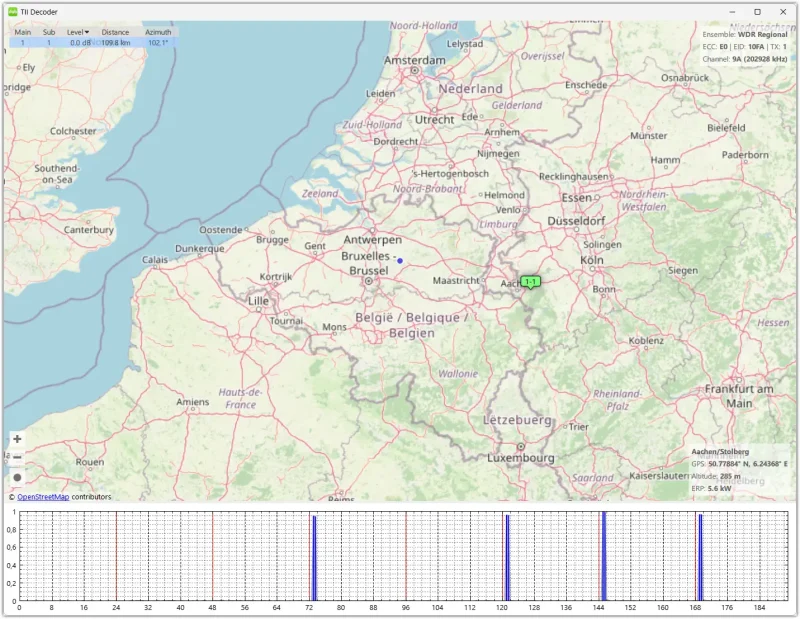
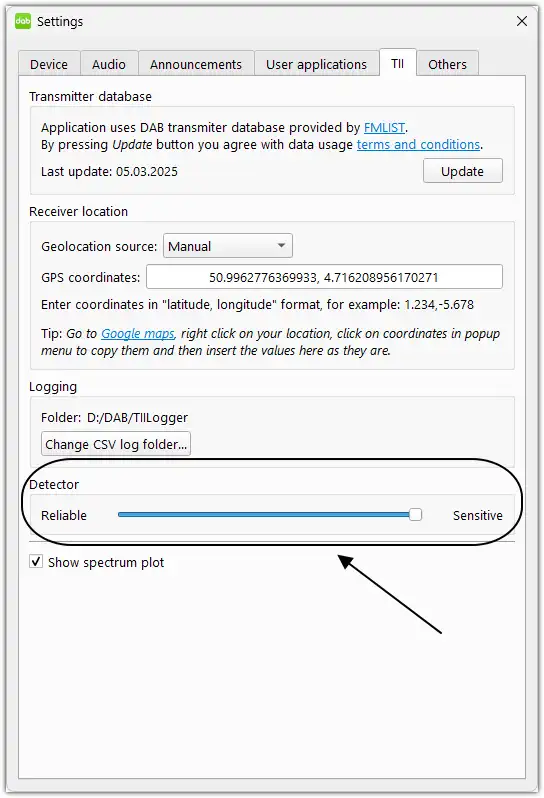
Settings
The .ini file (C:\Users\***\AppData\Roaming\AbracaDABra) is split: service list and audio recording schedule were moved to separate .json files.

Other changes
° SPI application loading progress is indicated in the application window.
Make sure SPI is switched on in the Settings (User applications).
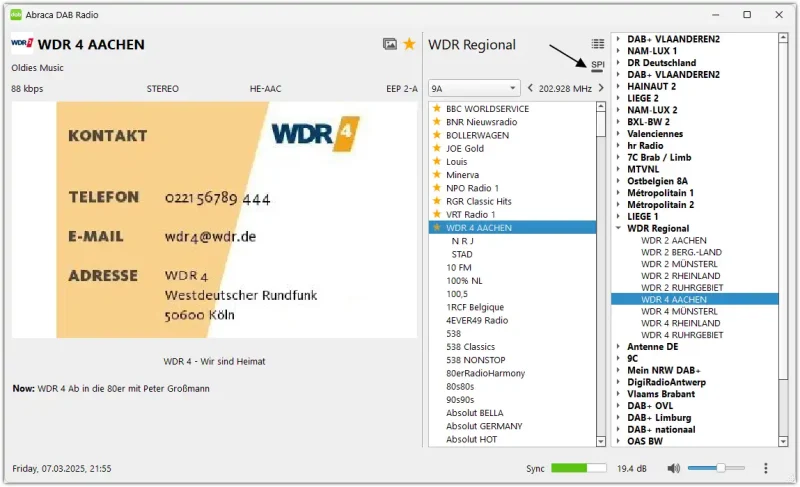
° Audio output framework can be switched between Qt and PortAudio. PortAudio is the default setting.
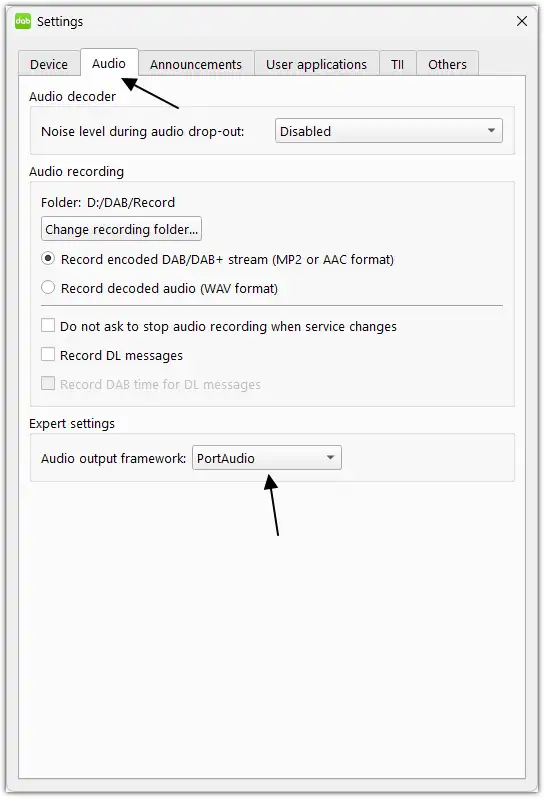
° Users can enable frequency correction int the DAB signal overview widget.

- Download API 3.15 here. ↩︎
- RTLSDR serial numbers: check out this video. ↩︎